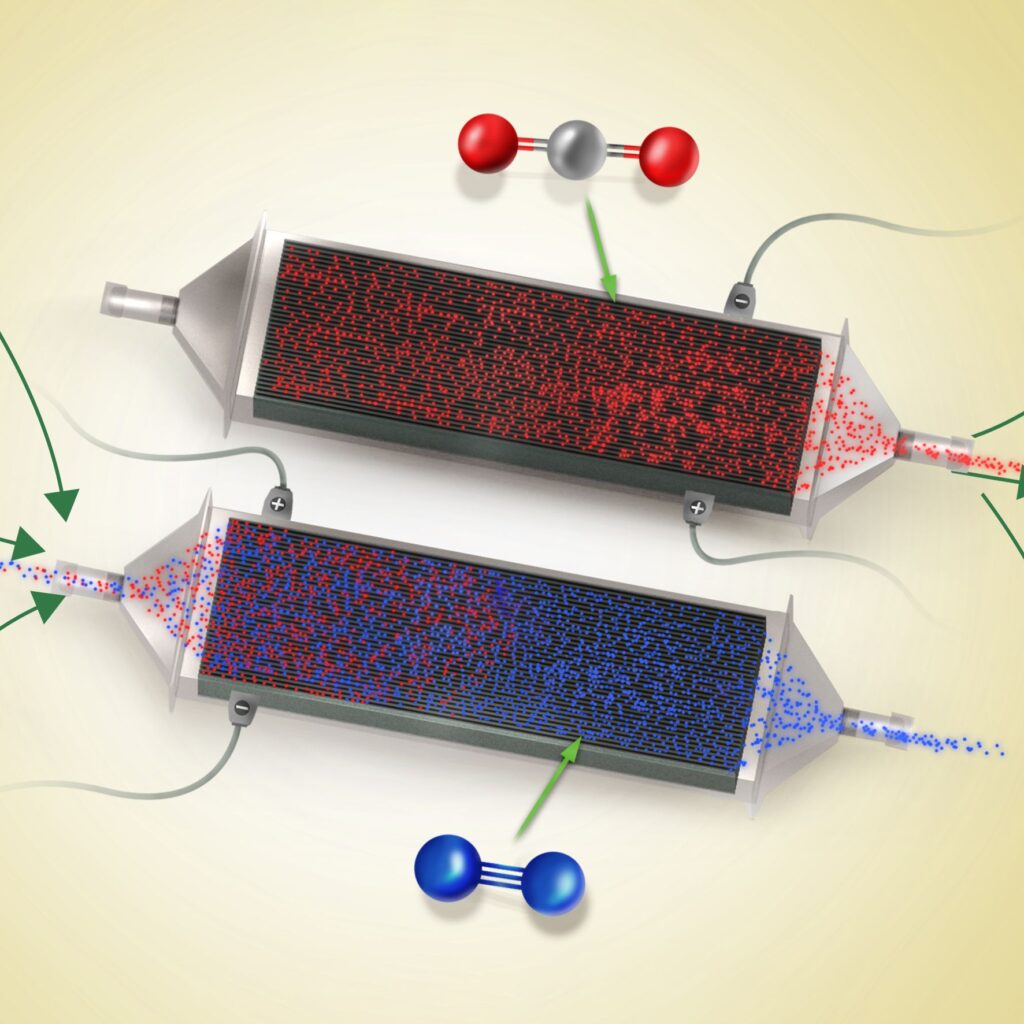
Welcome, eco-enthusiasts and science enthusiasts!
As I embark on a detailed exploration of the dynamic world of carbon capture, let’s first familiarize ourselves with the pivotal techniques and technologies at play. In this journey, I have tried to unravel the mechanisms behind each method, understanding their unique roles in our fight against climate change.
Carbon capture technologies are diverse, each tailored to different stages of the fossil fuel use process. We have Post-Combustion Capture, where CO2 is extracted from flue gases after combustion – a versatile solution for existing power plants. In contrast, Pre-Combustion Capture deals with CO2 before it’s released, converting fuel into a mixture of hydrogen and CO2 and capturing the latter. Then there’s Oxyfuel Combustion, which involves burning fuel in pure oxygen, creating a CO2-rich stream that’s easier to capture.
But the innovation doesn’t stop there. Direct Air Capture (DAC) represents a cutting-edge approach, directly removing CO2 from the atmosphere. Meanwhile, Biological Methods leverage natural processes like photosynthesis, using plants and algae as natural carbon sinks. Lastly, Carbon Mineralization accelerates the natural process of converting CO2 into solid minerals for long-term storage.
Each of these techniques offers a unique pathway to mitigating the impact of greenhouse gases, showcasing human ingenuity in the face of environmental challenges. The journey is not about understanding the technologies but about grasping their potential in our collective fight against climate change.
Post-Combustion Capture
Post-combustion capture involves extracting CO2 from flue gases after fossil fuel combustion. This technology is particularly suitable for retrofitting existing power plants.
A vital example is the Boundary Dam project in Canada, which captures about 1 million tons of CO2 annually, equivalent to taking 250,000 cars off the road. Another example is the Petra Nova plant in Texas, USA, which captures over 1.6 million tons of CO2 annually using this technology.
Pre-Combustion Capture
In Pre-Combustion Capture, fuel is converted into a gaseous mixture of hydrogen and CO2 before combustion. The CO2 is captured, and the hydrogen is used as fuel. An example is the Texas Clean Energy Project, which aims to capture 90% of its CO2 emissions, approximately 2.5 million tons annually. Another example is the Kemper County Energy Facility in Mississippi, which, though faced with challenges, stands as a testament to the potential of this technology.
Oxyfuel Combustion
Oxyfuel combustion burns fuel in pure oxygen, creating a more CO2-concentrated stream and simplifying capture. Oxyfuel technology can capture over 90% of CO2 emissions from power plants. A notified example is the Callide Oxyfuel Project in Australia, which demonstrated a 75% reduction in CO2 emissions compared to conventional coal-fired power plants.
Direct Air Capture (DAC)
DAC captures CO2 directly from the atmosphere, offering a solution to reduce ambient CO2 levels. Climeworks’ Orca plant in Iceland, the world’s largest DAC facility, captures 4,000 tons of CO2 annually. A vital example is Carbon Engineering’s DAC technology, which aims to capture up to one million tons of CO2 annually, equivalent to 40 million trees.
Biological Methods
Biological methods use natural processes like photosynthesis in plants and algae to absorb CO2. Microalgae can capture up to 1.8 grams of CO2 per day per square meter, making it a promising biological method. An important example is the Algae Bioenergy Systems project, which demonstrates how algae can be used effectively for carbon capture and biofuel production.

Carbon Mineralization
Carbon Mineralization accelerates the natural process of turning CO2 into solid minerals.
The CarbFix project in Iceland has turned over 10,000 tons of CO2 into rock, demonstrating the feasibility of this method. An important example is the project that captures CO2 from the Hellisheidi geothermal power plant and injects it into volcanic basalt, where it mineralizes.
As I conclude my in-depth look at the techniques and technologies of carbon capture, it’s clear that the path to a sustainable future is multi-faceted. From traditional methods like Post-Combustion Capture to innovative approaches like DAC and Carbon Mineralization, each technique contributes significantly to our global efforts in combating climate change.
These technologies aren’t just scientific advancements but beacons of hope, symbolizing our potential to harmonize industrial progress with environmental stewardship. As we refine these methods and develop new ones, our collective journey towards a greener, cleaner planet becomes more promising.
Carbon capture technologies stand out as vital threads in the grand tapestry of climate action. They remind us that we can face environmental challenges head-on with creativity, commitment, and collaboration. Let’s move forward with the knowledge and optimism these technologies bring, dedicated to protecting our planet for future generations. 🌍💚
Join me in this ongoing quest to balance our ecological footprint, embracing both the challenges and opportunities that carbon capture presents. Together, we can forge a more sustainable and hopeful future.



helloI really like your writing so a lot share we keep up a correspondence extra approximately your post on AOL I need an expert in this house to unravel my problem May be that is you Taking a look ahead to see you
Thank you!